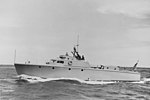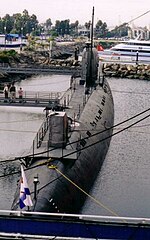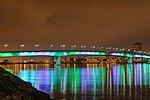SS Ada Hancock
1859 ships1863 in CaliforniaHistory of Los AngelesMaritime boiler explosionsMaritime history of California ... and 5 more
Maritime incidents in April 1863Maritime incidents in the United StatesShip infoboxes without an imageShips built in San Pedro, Los AngelesShipwrecks of the California coast
SS Ada Hancock was a steam-powered tender owned by Phineas Banning used to transfer passengers and cargo to and from large coastal steamships in San Pedro Harbor in the early 1860s. On April 27, 1863, her boiler exploded in San Pedro Bay, the port of Los Angeles, near Wilmington, California, killing 26 people and injuring many others of the 53 or more passengers on board.
Excerpt from the Wikipedia article SS Ada Hancock (License: CC BY-SA 3.0, Authors).SS Ada Hancock
Pier J Way, Long Beach
Geographical coordinates (GPS) Address Nearby Places Show on map
Geographical coordinates (GPS)
| Latitude | Longitude |
|---|---|
| N 33.732 ° | E -118.2 ° |
Address
Pier J Way
Pier J Way
90802 Long Beach
California, United States
Open on Google Maps







